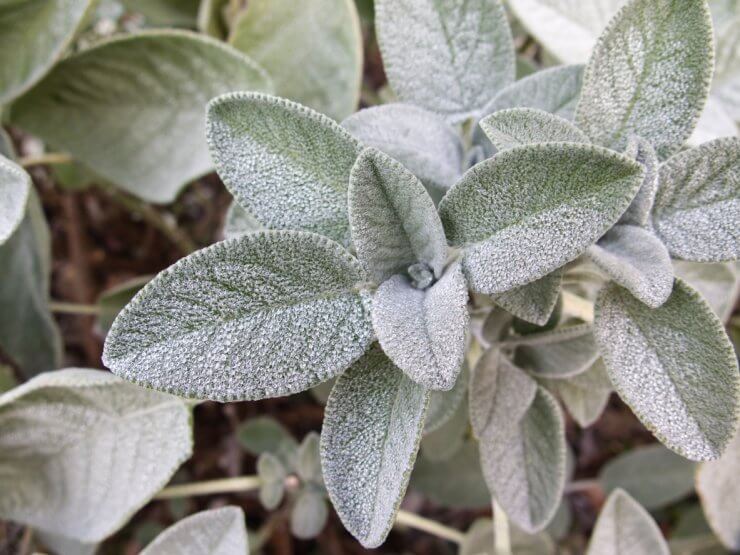
Last spring, I walked out to my herb garden expecting to see my trusty old sage plant springing back to life as it had done for the previous many years. Instead, I found a woody, lifeless stem where my aromatic friend used to be. I felt somewhat embarrassed – I’d gotten complacent about winter care, assuming sage’s legendary hardiness meant it could fend for itself indefinitely. That loss taught me an important lesson about the long-term care these remarkable plants need, especially in colder climates.
Understanding Sage’s Winter Biology
Sage (Salvia officinalis) is indeed remarkably cold-hardy, typically surviving down to USDA zone 5 without much fuss. But there’s fascinating science behind why established plants can typically survive winter while younger ones might struggle. Sage develops a complex root system that acts as both anchor and nutrient warehouse. Over years of growth, these roots penetrate deep into the soil, reaching layers that stay above freezing even when surface temperatures plummet.
What many gardeners don’t realize is that sage plants produce specialized proteins called “antifreeze proteins” in response to cold temperatures. These molecules lower the freezing point of cellular water, preventing the formation of ice crystals that would otherwise rupture cell walls. This biological marvel explains why healthy sage can survive temperatures well below freezing – but it’s not an infinite protection.
The woody stems that develop as sage matures serve another crucial purpose: they contain specialized tissue that can maintain water even in freezing conditions. However, these same woody stems can become problematic as they age, becoming less efficient at nutrient transport and more susceptible to winter damage.

Strategic Winter Care for Long-Term Survival
Here’s where many of us go wrong: we assume that because sage survives winter easily in its early years, it will continue to do so indefinitely without intervention. The reality is that proper winter maintenance becomes more crucial as the plant ages. I’ve learned to watch for several key warning signs that indicate a sage plant needs attention:
First, watch for stems becoming excessively woody and producing fewer leaves. This typically starts happening around year three or four. When you notice this, it’s time to start an annual pruning regime. In late fall, cut back about one-third of the older woody growth, but never prune into bare wood where you don’t see any leaf buds.
Soil health becomes increasingly important as sage ages. These plants are Mediterranean natives that evolved in well-draining, calcium-rich soils. Over time, our garden soil can become compacted and acidic, especially in regions with significant rainfall. I now add a handful of crushed eggshells or horticultural lime around each plant in early fall, which provides both calcium (over time) and helps maintain the slightly alkaline pH that sage prefers.
Perhaps counterintuitively, winter mulching becomes more important as sage plants age. While young plants with their robust root systems might power through winter, older plants benefit from protection. However – and this is crucial – the mulching technique for sage differs from what you might use for other perennials. Instead of piling organic matter around the crown, create a mulch ring about 6 inches away from the stems using pea gravel or coarse sand. This provides insulation while maintaining the dry conditions that prevent crown rot, sage’s archenemy in winter.
The most surprising discovery I’ve made is the importance of fall watering patterns. While sage is famously drought-tolerant during the growing season, ensuring adequate hydration about 2-3 weeks before the first hard freeze helps the plant produce those crucial antifreeze proteins I mentioned earlier. Just be sure to stop watering once temperatures consistently drop below 40°F (4°C). In my case, I think this could have been the culprit, it was a dry summer with very little water before the frosts began!
Most critically, examine your sage plants for signs of stress in late summer. Look for any desiccated leaves, stem dieback, or sparse growth patterns. These are often early warnings that the plant needs intervention before winter sets in. A healthy sage plant going into winter has a much better chance of emerging vigorous in spring.
I’ve since replaced my lost sage plant, and this time I’m giving it the attention it deserves. The new plant is thriving, and I look forward to many years of harvesting. The experience has taught me that even the hardiest plants benefit from thoughtful care – and that sometimes losing a plant teaches us more than keeping one alive.
Want to grow sage at home? Our Sage Gardening Guide is your complete resource for growing thriving, flavorful sage in any garden. Discover which of the sage varieties will work best in your space, learn time-tested companion planting combinations that boost growth and flavor, and master the precise sun and water requirements that keep sage plants productive year after year. Whether you’re just starting out or looking to expand your herb garden, this comprehensive guide brings together centuries of gardening wisdom with modern growing techniques.
What’s your experience with overwintering sage? Have you noticed changes in your plants as they age? Share your successes and challenges in the comments below – there’s always more to learn from fellow gardeners’ experiences, and I’d love to hear about the techniques that have worked in your garden.


 Previous
Previous

